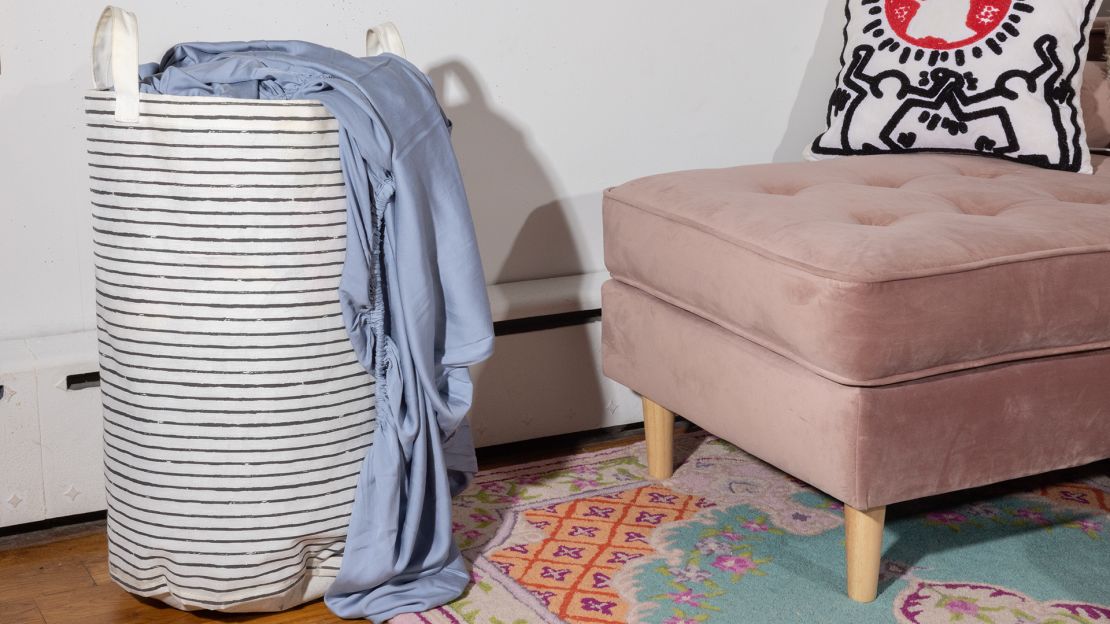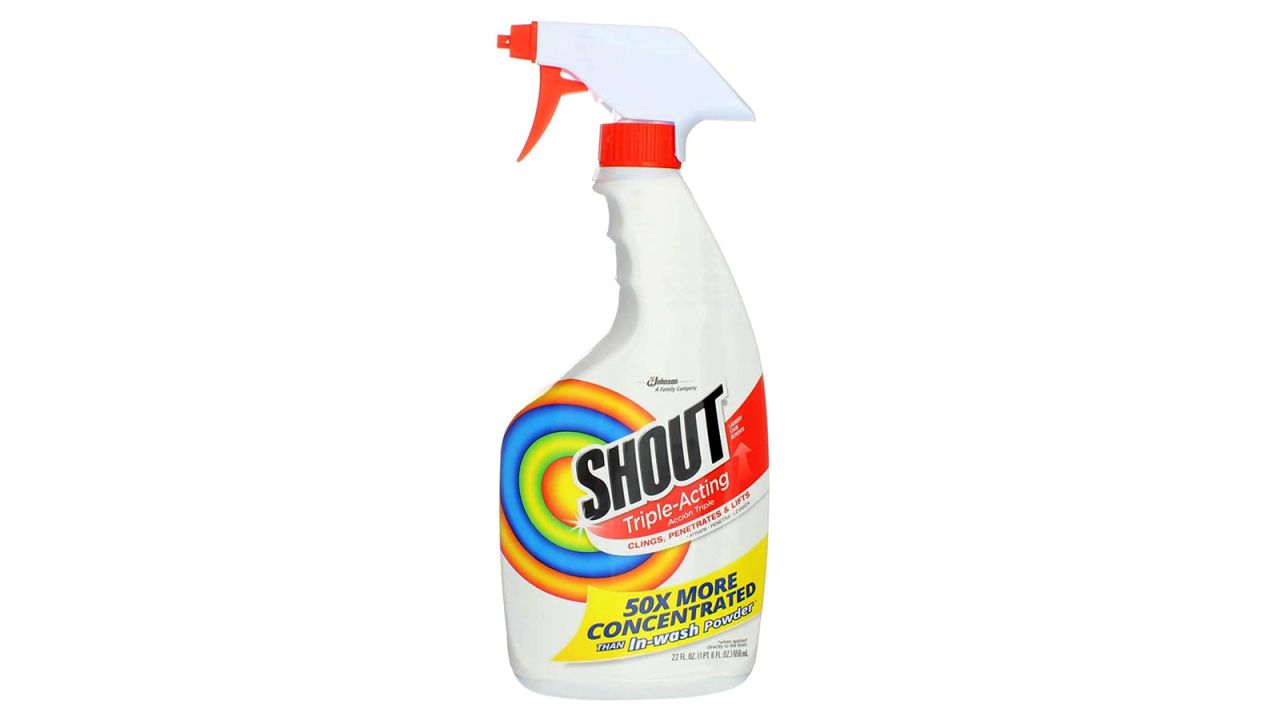Washing bed sheets seems pretty straightforward, as far as laundry goes. Unfortunately, a lot of people are washing their bedding all wrong — and, compounding the confusion, many of the old rules of laundry we grew up with have changed along the way.
To clear things up and establish some firm guidelines, we spoke with laundry and bedding experts about the right way to wash sheets, duvets and comforters. This guide covers the best laundry products and techniques to use for washing bedding and provides answers to your most vexing questions —?including the one everyone wants answered: How often are we supposed to be washing those sheets anyway?
How to wash sheets
Katie Elks, the director of design and product development at Brooklinen, says, “For all sheets, we recommend washing in a cold or cool cycle.” Brian Sansoni, the senior vice president for communications of the American Cleaning Institute, echoes those guidelines: “Most laundry can now be done in cold water. That should be the default.” Sansoni explains that cold water is “usually just as effective, but it’s more sustainable and your sheets will last longer” because cold-water washing not only reduces wear and tear but fading.
Elks says that people should own at least two sets of sheets to increase longevity. It’s also wise to have more than one sheet set for days when you don’t have time to wash sheets and put them right back on the bed or, more crucially, in case someone soils the sheets and an immediate changing of the bed linens is required.
Both Elks and Sansoni recommend separating sheets into light and dark loads, although modern technology has rendered this rule less absolute than it used to be. Because cold water is now the standard for washing, the need to separate textiles by color is less important than separating by fabric type. If you do opt to wash dark and light sheets together, and dye transfer is a concern, use an in-wash color catcher to capture any loose dyes before they can stain lighter-colored items. If all your sheet sets are dark colored, Sansoni says you may want to “consider a detergent for darker fabric that is intended to reduce fading.”
When it comes to stains, you should pretreat small stains as they occur and use a laundry booster if all-over staining is an issue. Protein stains like sweat or blood, which are common on sheets, are best treated with an enzymatic stain remover, like Zout, while Shout is best for food and drink stains, like chocolate or coffee.
Essentials for washing bedding
Use a high-quality laundry detergent to wash bedsheets on a weekly or biweekly basis. Wash sheets in cold water as the default, using the “normal” cycle (also called “regular” or “permanent press”), and take care not to overstuff the washing machine. Sheets need room in the drum of the washer in order for water and detergent to fully penetrate the fibers.
To maintain the color of dark sheets, which can fade over time from exposure to water and heat, wash them separately from white and light-colored sheets using a darks detergent formulated to prevent fading, pilling and other damage.
To wash white, light-colored, bright-colored and dark sheets together in the same load without the risk of fugitive dyes bleeding onto lighter-colored items, use a dye-catching sheet, like Shout Color Catcher.
Before washing sheets, pretreat any stains using an appropriate stain removal product. Shout is one of the best all-around stain removers, and it is especially effective at treating stains from coffee and foods, making it a good choice for the breakfast-in-bed crowd.
Zout is an enzyme formula that is highly effective at removing the bio-based protein stains that are often found on sheets.
OxiClean and other oxygen bleaches can be used in the wash for all-over stain remediation and brightening up sheets. Soaking sheets in an oxygen bleach solution before laundering can help restore sheets that have become dingy over time.
Why make the switch to cold-water washing?

One of the biggest shifts in the way that we do laundry is the move to using cold water as the default for all washing. Typically, people have been taught to use hot or warm water for whites and lights, especially for items like sheets and towels. But thanks to advances in both washing machine technology and detergent formulations, hot water is no longer needed in most laundering scenarios.
Jessica Zinna, a senior scientist for Procter & Gamble, explains why you should consider making the switch to cold water when doing laundry. “Switching to a cold-water wash is not only beneficial for your clothes and your wallet but for the environment too,” she says. “Up to 90% of the energy used during the laundry process goes toward heating the wash water for warm or hot cycles.”
Moving away from a dependence on hot-water washing will also extend the life span of your sheets and bedding. “Washing in hot water can be damaging to clothes, sheets, towels, etc., because it can cause dye loss and shrinkage,” Zinna says.
Sansoni agrees that cold water should be the default but mentions that there will be times when using hot or warm water is called for. “If someone sleeping in that bed is ill, you may want to wash in warmer water and use a laundry sanitizer,” he says. “If you have asthma or allergies, hot water can help kill dust mites (a common trigger).”
How to dry sheets
Both Elks and Sansoni recommend line-drying as the ideal way to dry sheets. “If it’s a nice day, drying on a line, out of direct sunlight, is a good option,” Sansoni says.
If outdoor line-drying isn’t an option for you, but your laundry room or another space in the home allows for it, you might also consider indoor line-drying. “For all sheets, we recommend line-drying to preserve original fibers, colors and elasticity,” Elks says.
If machine-drying sheets best fits your laundering needs, Elks and Sansoni say that opting for a low heat and tumble setting is the best choice. Sansoni adds that using the dryer’s moisture sensor feature, if your machine features one, is a good way to avoid overdrying sheets, which can cause fading, shrinkage and a weakening of the fibers. And to further avoid wrinkling, it’s best to remove sheets from the dryer immediately after the cycle is complete.
Essentials for drying bedding
The experts we spoke to strongly recommend line-drying sheets, if that is an option for you. A sturdy outdoor drying line allows you to use the power of the sun and air to gently dry clothing and household goods.
Dryer balls are essential for washing bedding because they help to redistribute stuffing in bulky items like duvets and comforters. Dryer balls also keep sheets in motion, preventing them from clumping up and helping to speed drying time.
If you or someone in your household has an allergy to wool, look for PVC or thermoplastic dryer balls as an alternative.
How to wash a comforter
Most comforters and duvets can be machine-washed, though Sansoni reminds us to “read the tag, if still attached, and follow those directions,” because bedding materials and fabrications can vary widely.
Pretreat any stains first, then machine-wash the comforter or duvet using a gentle cycle. Sansoni cautions against a common mistake people make when doing laundry: over-detergenting. “Read the detergent label to use the right amount, as too much can potentially leave residue.”
If the drum of your home washer is not large enough to fit a duvet, Elks recommends spot treating. Stuffing it into a washer that is too small can damage a comforter’s baffle box construction. “We recommend caring for your comforter with regular fluffing,” Elks says, “and spot cleaning with soft soap, like Woolite.”
When a comforter or duvet needs a deeper clean, Elks says, you can take it to the dry cleaner. Another good option when a comforter or duvet needs more than spot treating is to make use of a local laundromat, which will have oversized machines that are plenty large enough to accommodate bulky bedding.
How to dry a comforter

When it comes to drying a comforter or duvet, Sansoni recommends using the dryer on a low setting and stopping the drying cycle periodically to break up any lumps in the filling. Using dryer balls will also help to fluff the duvet and ensure even distribution of its stuffing. Make sure the duvet is fully dry before putting it away or back on the bed.
It may surprise you to learn that throwing your comforter or duvet in the dryer can also help keep it plush. Elks suggests “using a dryer on the no heat setting to fluff and freshen” a comforter. “Regular fluffing helps keep comforters lofty and plush,” she adds.
How often to wash sheets
This is the question everyone wants an answer to: How often should people wash their sheets?
“Every one to two weeks,” Sansoni says, adding that “weekly is better, especially if you have a dust mite allergy or during the summer when you’re probably sweating more.”
Elks agrees. “We suggest washing your sheets every two weeks and alternating between two different sets to increase longevity,” she says. “If you sweat a lot in your sleep, washing more often will help keep your sheets feeling fresher.”
Some other factors to consider when determining how often to wash your sheets:
- Do you sleep at home in your bedroom every night? Frequent travelers will not need to change sheets as often.
- Do you have easy access to laundry facilities? If not, you may not do laundry as often, so consider stocking up on more sheet sets than the two that the experts recommend.
- Do you shower before you get into bed at night? Do you sleep naked? Are you a heavy sweater? Body soils are the main thing that makes a bedsheet dirty, so people who sleep naked or suffer from night sweats will want to wash more often than people who shower before bed, sleep in pajamas or are cooler sleepers.
- Do you sleep alone or with a partner, child(ren) or pet(s)? Two (or more) people in a bed mean dirtier sheets that will need to be laundered more frequently.































